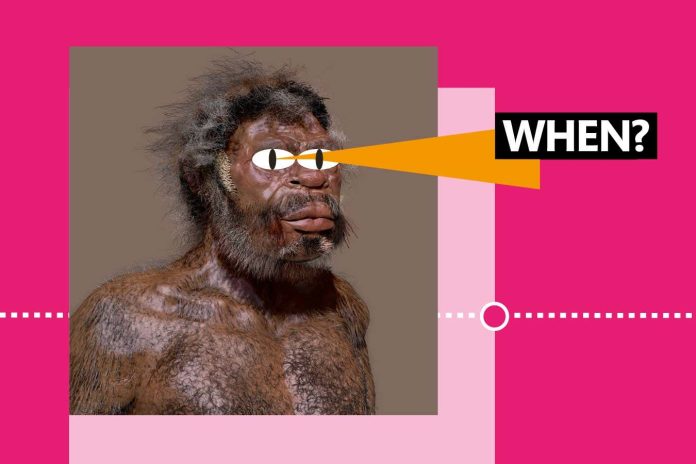John Bavaro Fine Art/Science Photo Library
For the vast majority of our planet’s history, there were no humans. Today, there are more than eight billion of us. Logically, then, there must have been a moment when Homo sapiens became a distinct species. Yet that moment is surprisingly hard to pin down. The problem, for once, isn’t a lack of fossils. Instead, disagreement about when to mark the origin of humanity comes down to the speciation process itself.
We often imagine the human evolutionary tree as a grander version of a personal family tree – indeed, researchers tend to talk about parent, daughter and sister species. In this picture, our parent species is equivalent to our biological parents, and the birth of H. sapiens becomes an event that is as easy to define as our own birth. But speciation isn’t really like that.
For evidence of this, look no further than a study posted online last year. Trevor Cousins and his colleagues at the University of Cambridge suggest our supposed parent species, Homo antecessor, split away from its parent, Homo heidelbergensis, more than a million years ago. About 600,000 years ago, H. antecessor gave rise to two branches: one led to the Neanderthals and Denisovans – another kind of hominin – the other to H. sapiens. Then comes the twist. Our evolutionary grandparents, H. heidelbergensis, stuck around to see the birth of the H. sapiens lineage – and about 300,000 years ago, the two interbred in a big way. In fact, the researchers’ model indicates that about 20 per cent of our ancestry comes from this interbreeding.…




